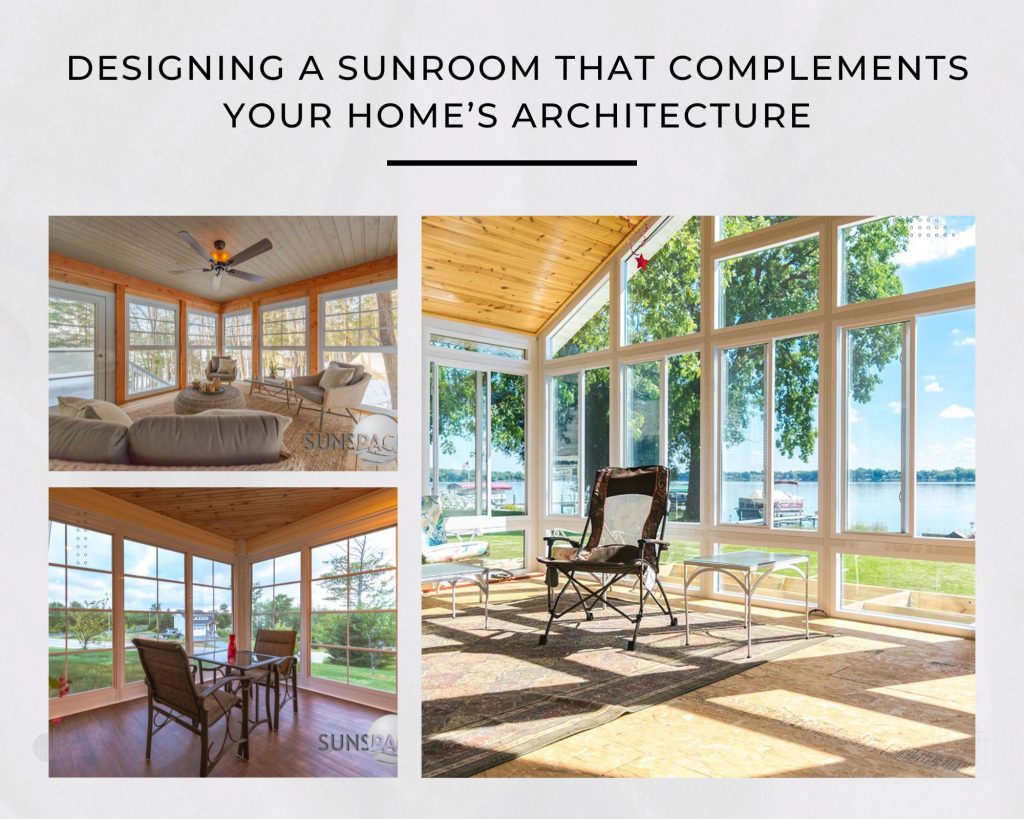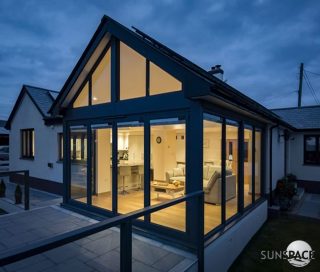Designing a Sunroom That Complements Your Home’s Architecture

A sunroom should feel like a natural extension of your home, blending seamlessly with its existing design while enhancing curb appeal. Whether your home is modern, traditional, or somewhere in between, thoughtful planning can ensure that your sunroom looks like it was always meant to be there. Here are some key tips to help you design a sunroom that complements your home’s architecture.
Match the Exterior Materials
One of the best ways to create a cohesive look is to match your sunroom’s exterior materials with those of your home. If your house has brick siding, consider incorporating brick elements into the sunroom’s base. For homes with wood siding, choose a finish that complements or matches the existing color and texture. Keeping materials consistent will make your sunroom look like an original part of your home rather than an afterthought.
Choose a Roofline That Flows Naturally
The roofline of your sunroom should blend with your home’s existing structure. A flat-roof sunroom may suit a modern home, while a gabled or hipped roof can complement traditional designs. If possible, align the sunroom’s roof pitch with the rest of your house for a more integrated look. Adding matching shingles or roofing materials will further enhance the seamless appearance.
Keep the Window Style Consistent
Windows play a major role in tying your sunroom’s design to your home. If your house features double-hung or casement windows, choose similar styles for your sunroom. Grid patterns, trim colors, and frame materials should also be consistent to maintain a unified aesthetic. For modern homes, large, floor-to-ceiling windows can enhance the sleek, contemporary look.
Coordinate Paint Colors and Finishes
To ensure your sunroom doesn’t stand out awkwardly, match or complement the color scheme of your home. If your exterior is painted in neutral tones, stick with a similar palette for the sunroom. For homes with bold accents, consider incorporating those colors in the sunroom’s trim or doors to maintain visual harmony.
Select the Right Flooring
The flooring inside your sunroom should transition smoothly from your home’s interior. If you have hardwood floors inside, consider a wood-look tile or vinyl plank for the sunroom to maintain the flow. For homes with tile or stone flooring, extending similar materials into the sunroom will help create a cohesive feel.
Consider Proportions and Scale
A well-designed sunroom should be proportional to your home’s size and structure. If your house is single-story, an oversized sunroom addition might look unbalanced. Instead, opt for a design that enhances your home’s existing shape rather than overwhelming it. Proper scaling ensures the sunroom looks like a natural part of the house rather than an add-on.
Add Architectural Details That Match Your Home
Small details can make a big difference in achieving a seamless design. Incorporate architectural features from your home into the sunroom, such as matching moldings, trim, or decorative elements. If your home has columns, consider adding similar ones to the sunroom entrance. If your house has a farmhouse-style exterior, incorporating rustic wood beams can help maintain design continuity.
Maintain Symmetry and Balance
A sunroom that is positioned awkwardly or lacks symmetry can disrupt the overall aesthetic of your home. When planning placement, ensure the sunroom is balanced with the rest of the house. Aligning windows, doors, and rooflines can help maintain a visually pleasing design.
Blend Landscaping Into the Design
A well-integrated sunroom doesn’t stop at the structure itself—landscaping plays a key role. Use plants, walkways, or patios to create a natural transition from your home to the sunroom. Adding flower beds or shrubs along the base of the sunroom can help it blend more seamlessly into the yard.
Final Thoughts
Designing a sunroom that complements your home’s architecture requires attention to detail, but the result is a beautiful, functional space that enhances your property’s curb appeal. By matching materials, rooflines, windows, and colors, you can create a sunroom that looks like a natural extension of your home. Thoughtful planning will ensure your new space is both stylish and seamless, offering year-round enjoyment while boosting your home’s value.

